I never no what’s going to happen when I head out in the morning. I set out early this morning with the intention of photographing some Wood Ducks that I had recently seen on a local playa. I love Wood Ducks because of their vibrant colors but find them very difficult to photograph. Somehow those colors just dont look the same in a photograph no matter how much saturation I use. When I arrived at the playa however I heard the characteristic chattering call of a familiar bird and it wasn’t long before I spotted the loudmouth. It was a Belted Kingfisher.
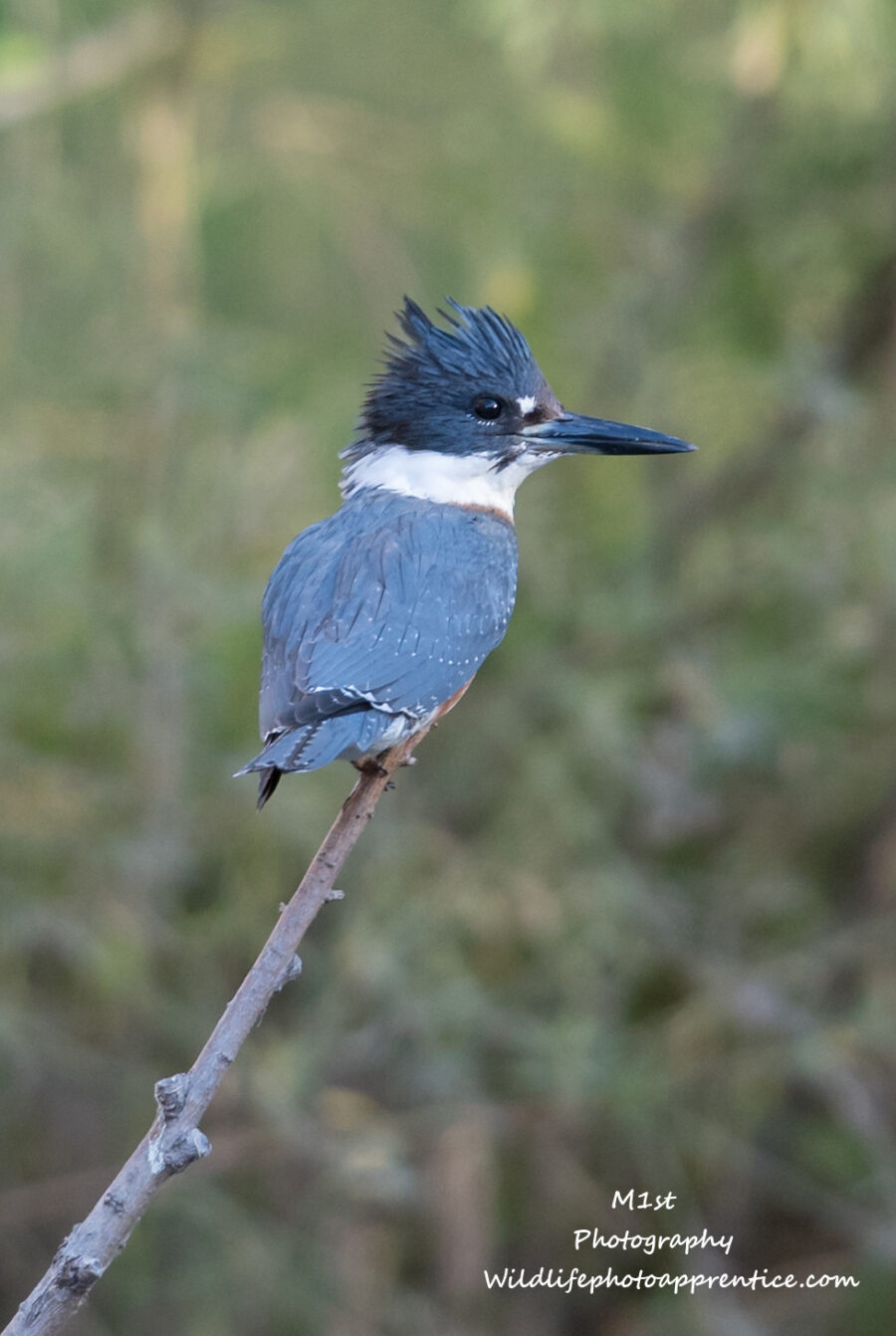
I quickly discovered that he was in the process of catching a breakfast of small minnows from the pond. This behavior is very characteristic and involves diving either from a perch or from the air onto unsuspecting prey in the water. When “fishing” from a perch, Kingfishers usually return to that perch to eat their catch or try again, in a somewhat repetative fashion. Knowing this because I had researched Kingfishers prior to this outing, I abandonded the Wood Duck plan and began to think action shots.
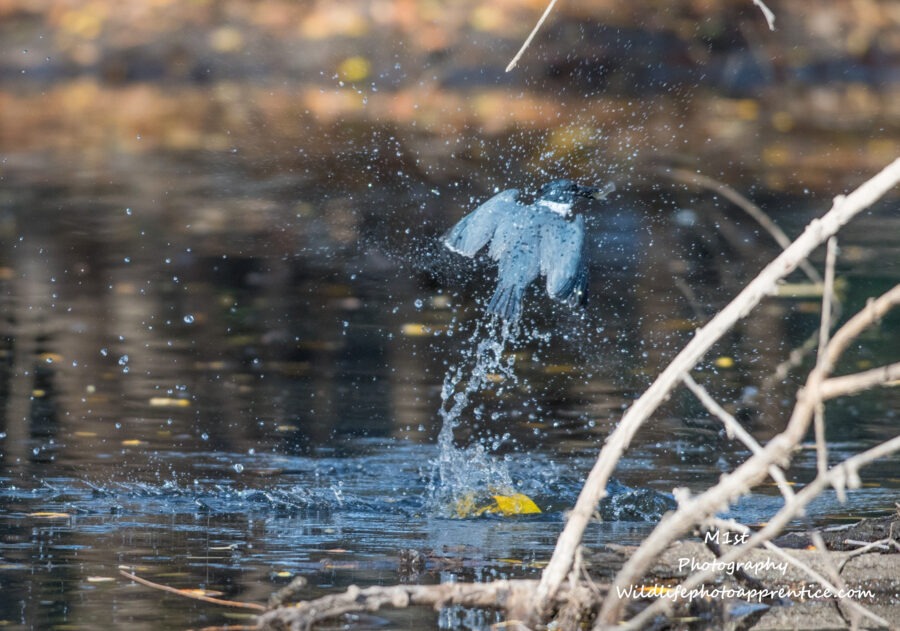
Action shots require several things. Formost in our mind should be shutter speed. A shutterspeed of at least 1/1600th of a second is required to freeze the bird and the water spray. Adjusting the cameras ISO higher in order to get the correct exposure may be necessary depending on the light available.
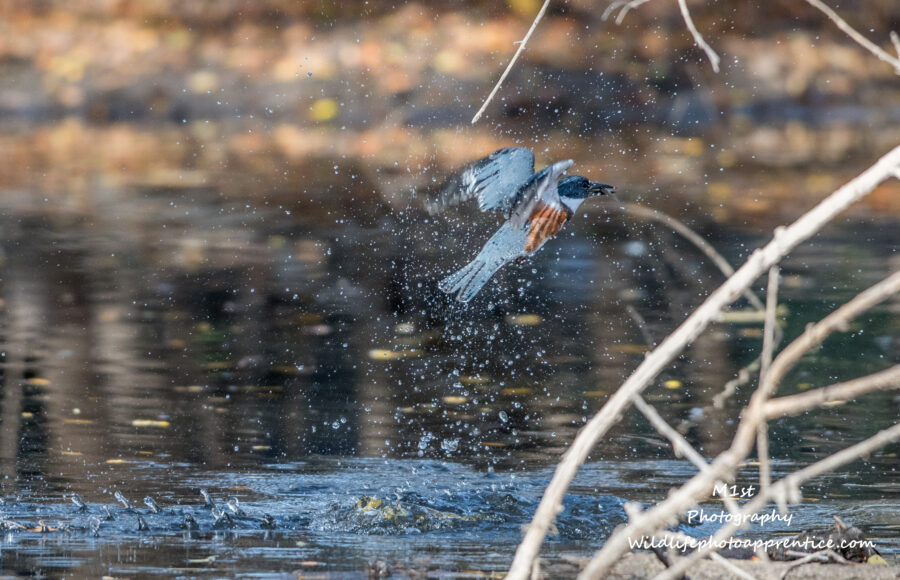
The second thing I think of is burst rate. I want to capture as many frames in as little time as my camera will allow. My Nikon D500 will do 10fps so I set it at the max. Your camera may not do 10fps so set it at watever the maximum rate is. The faster the frame rate the more action you will capture.
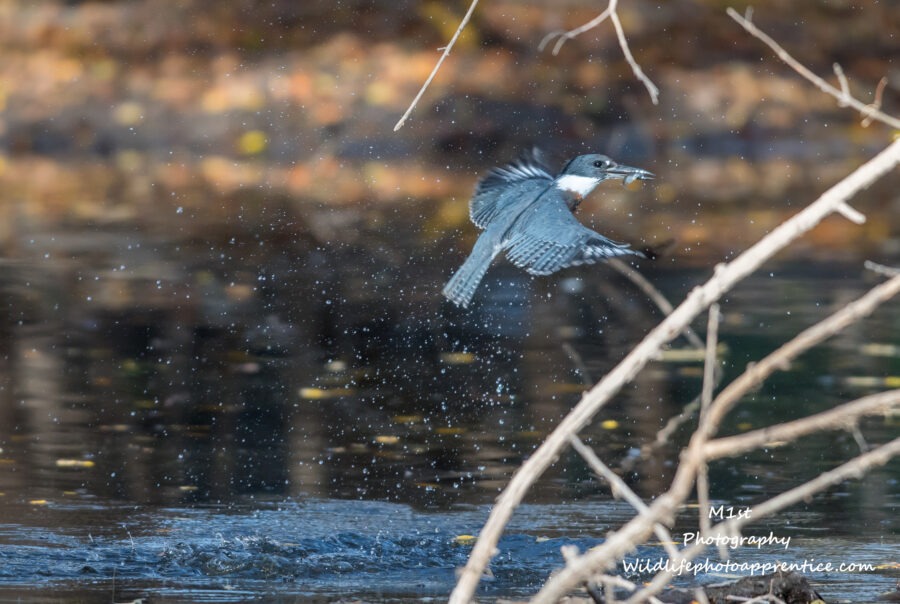
The last thing you need is a bit of luck and alot of patience. I sat for almost 2hrs waiting and trying to capture one decent series. Most are out of focus, or the branch is in the way, or I just wasn’t paying attention well enough and missed the dive alltogether. One out of every 5 or 6 dives I managed to get a decent shot.
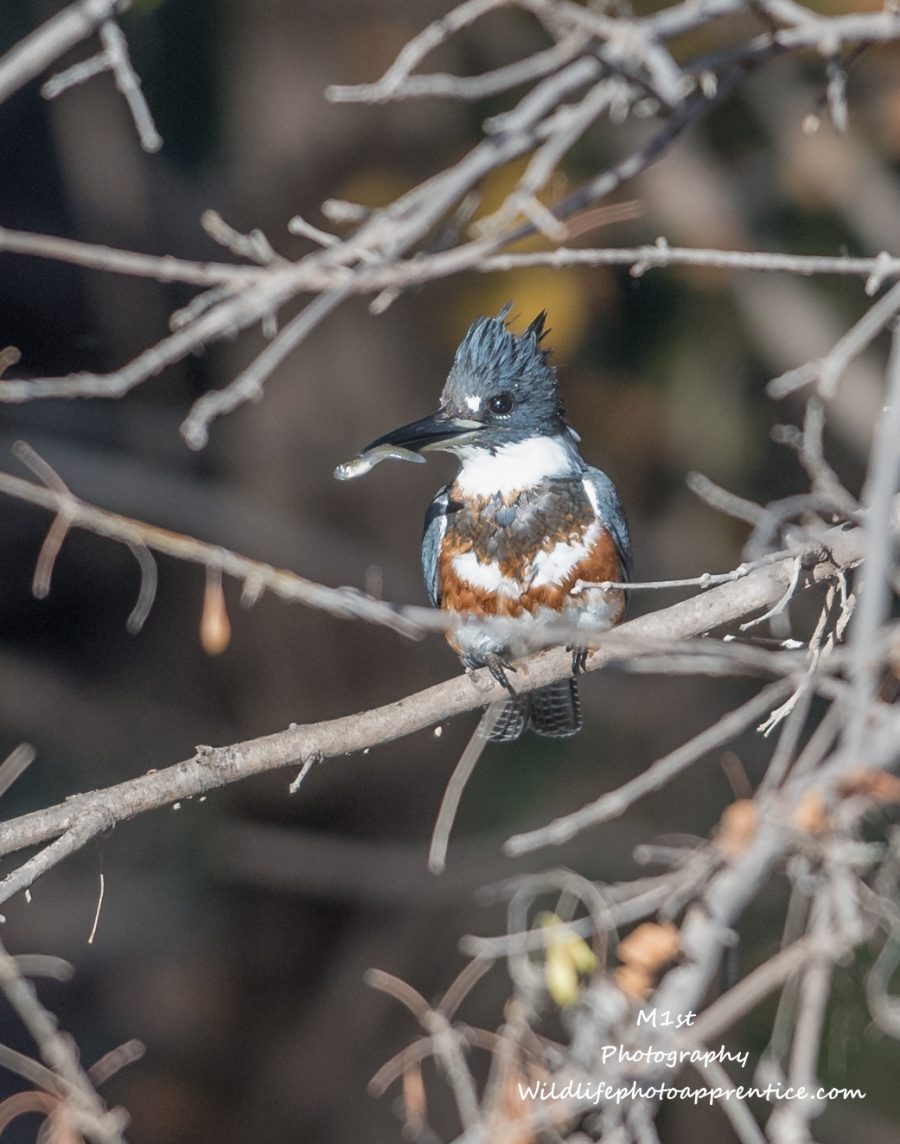
Knowing your camera settings and your subject before you go out will make you a better wildlife photographer. If we do our homework, recognize the oppertunity, are patient, lucky and use the right settings, we may just be rewarded with some great photos.
